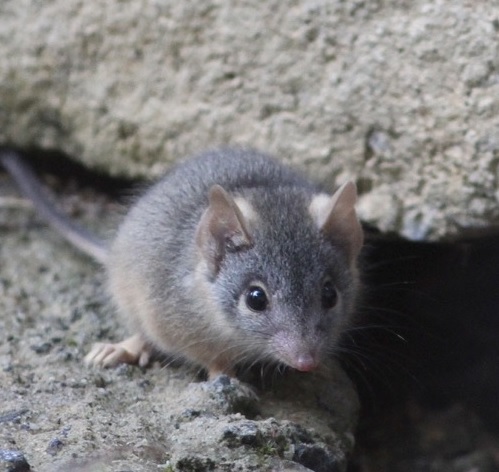Backyard science cures for boredom
Posted on 2 April, 2020 by Ivan
No doubt you have seen some great ideas of how to remain engaged and occupied during the isolation phase of the COVID-19 outbreak. It’s a very challenging time and impacts continue to spread across the globe. Connecting Country is adapting our community engagement model, to deliver some events to our audience, community and stakeholders in the comfort of their own home. Stay tuned for when we advertise these events in the coming months. We also hope to produce some videos down the track to keep everyone engaged.
We have discovered some excellent activities you can do from the safety of your own backyard and still contribute to science. ‘The Conservation’ recently published an inspiring article. Please enjoy the following extract highlighting many useful activities and ideas to contribute to backyard science. To view the full article – click here.
Environmental projects need your support too

The yellow-footed antechinus (Antechinus flavipes) is a curious little marsupial (photo by Jane Rusden)
If you’d like to get your mind off COVID-19, there’s a plethora of other options for citizen scientists. You can contribute to conservation and nature recovery efforts – a task many took to after the recent bushfires. Some sites ask volunteers to digitise data from ongoing environmental monitoring programs. Contributors need no prior experience, and interpret photos taken with remote digital cameras using online guides. One example is Western Australia’s Western Shield Camera Watch, available through Zooniverse.
Other sites crowdsource volunteers to transcribe data from natural history collections (DigiVol), historical logbooks from explorers, and weather observation stations (Southern Weather Discovery).
Citizen science programs such as eBird, BirdLife Australia’s Birdata, the Australian Museum’s FrogID, ClimateWatch, QuestaGame, NatureMapr, and the Urban Wildlife App, all have freely available mobile applications that let you contribute to ‘big’ databases on urban and rural wildlife.
Nature watching is a great self-isolation activity because you can do it anywhere, including at home. Questagame runs a series of ‘bioquests’ where people of all ages and experience levels can photograph animals and plants they encounter.
In April, we’ll also have the national Wild Pollinator Count. This project invites participants to watch any flowering plant for just ten minutes, and record insects that visit the flowers. The aim is to boost knowledge on wild pollinator activity.
The data collected through citizen science apps are used by researchers to explore animal migration, understand ranges of species, and determine how changes in climate, air quality and habitat affect animal behaviour.
This year for the first time, several Australian cities are participating in iNaturalist’s City Nature Challenge. The organisers have adapted planned events with COVID-19 in mind, and suggest ways to document nature while maintaining social distancing. You can simply capture what you can see in your backyard, or when taking a walk, or put a moth light out at night to see what it attracts.
For those at home with children, there are a variety of projects aimed at younger audiences.
From surveying galaxies to the Bird Academy Play Lab’s Games Powered By Birds – starting young can encourage a lifetime of learning.
If you’re talented at writing or drawing, why not keep a nature diary, and share your observations through a blog.
By contributing to research through digital platforms, citizen scientists offer a repository of data experts might not otherwise have access to. The Australian Citizen Science Association (ACSA) website has details on current projects you can join, or how to start your own.
Apart from being a valuable way to pass time while self-isolating, citizen science reminds us of the importance of community and collaboration at a time it’s desperately needed.






Leave a Reply